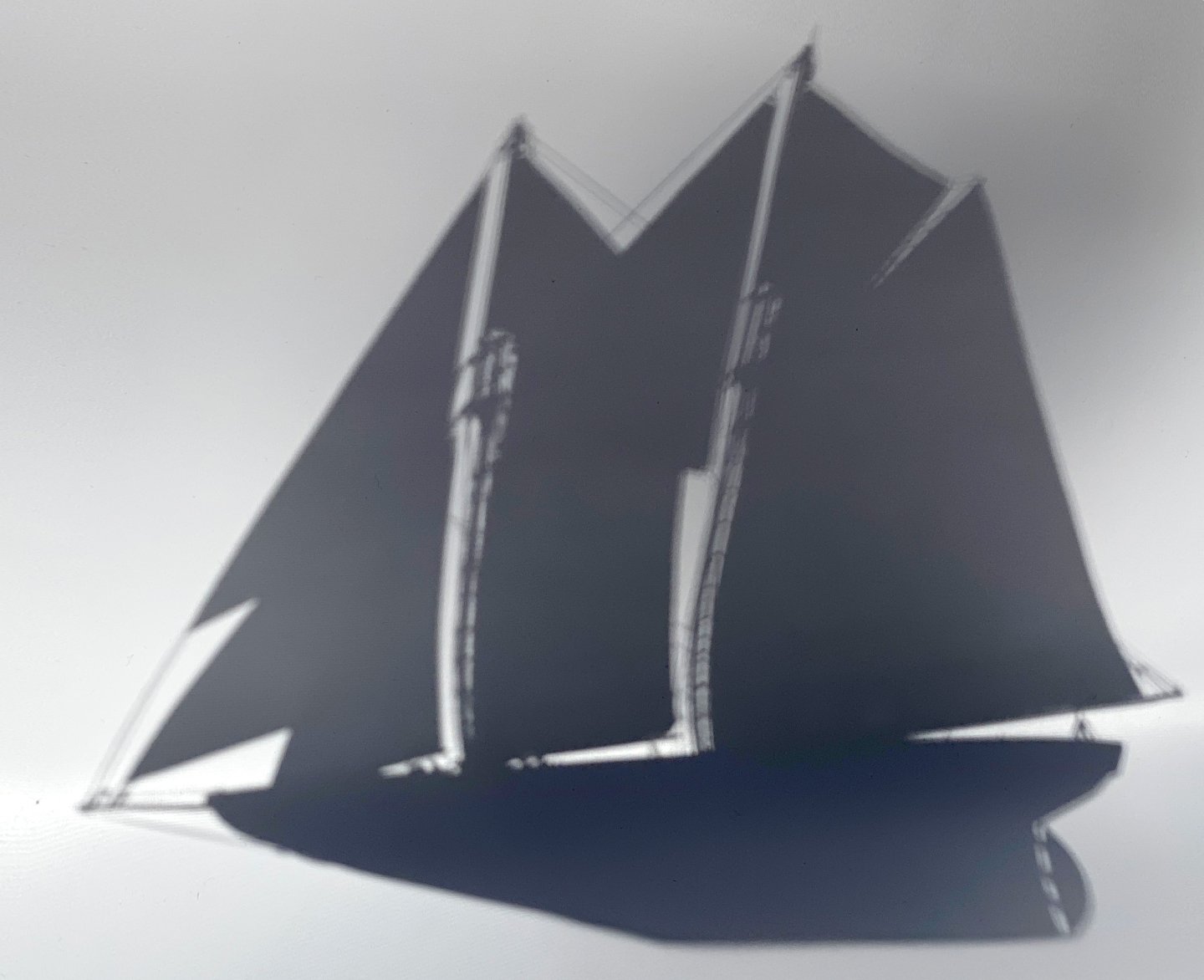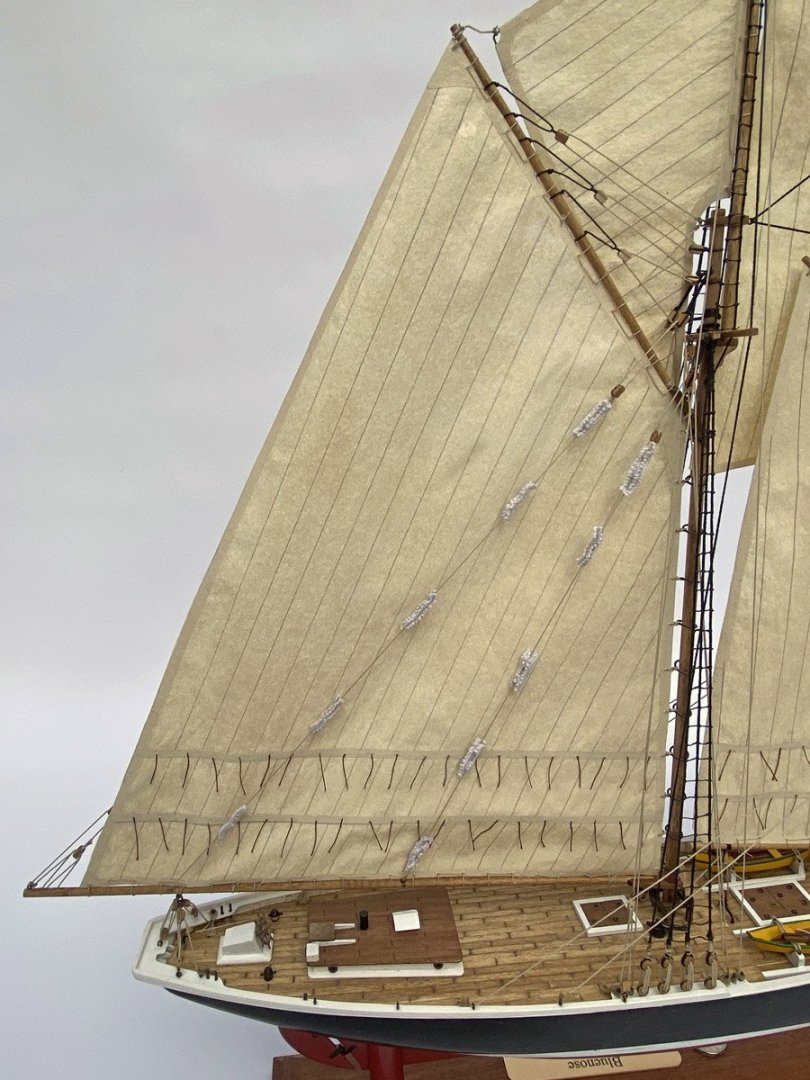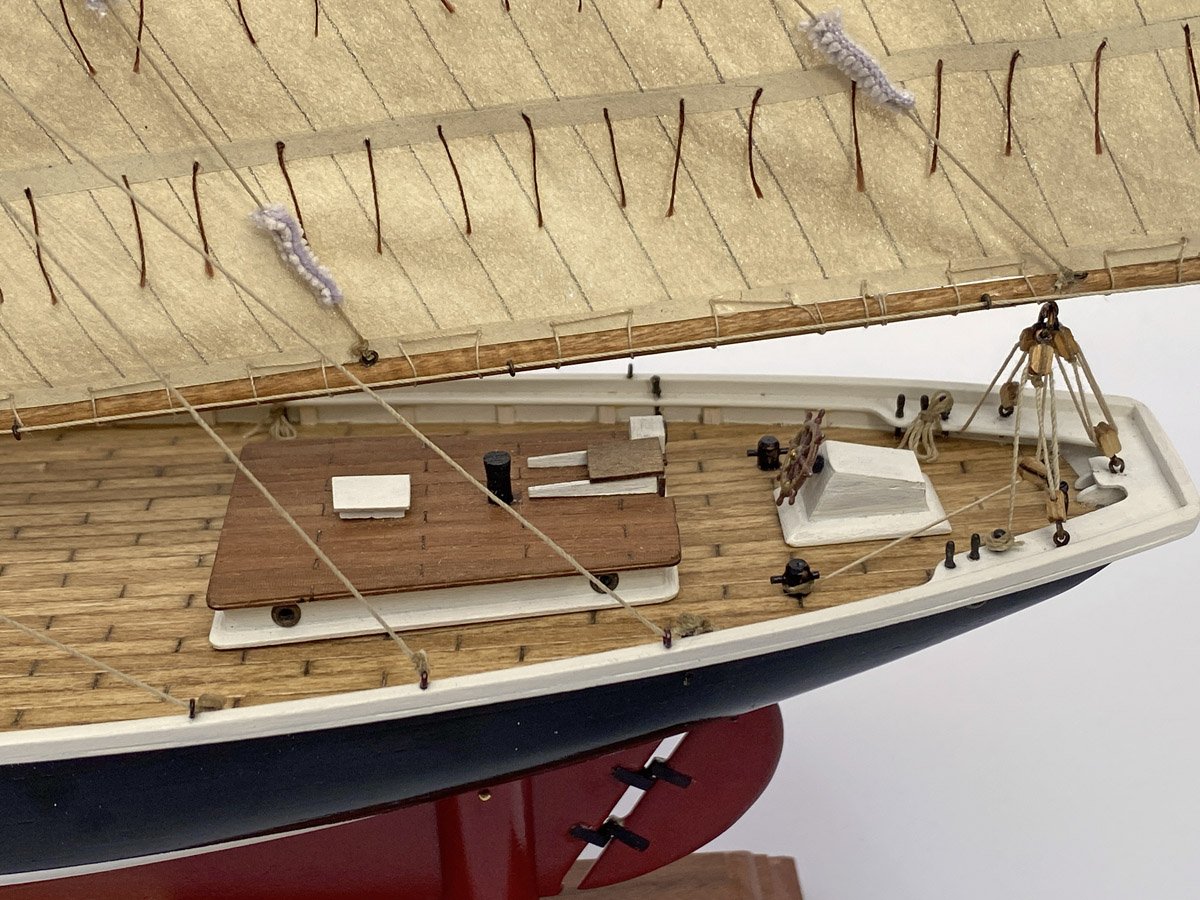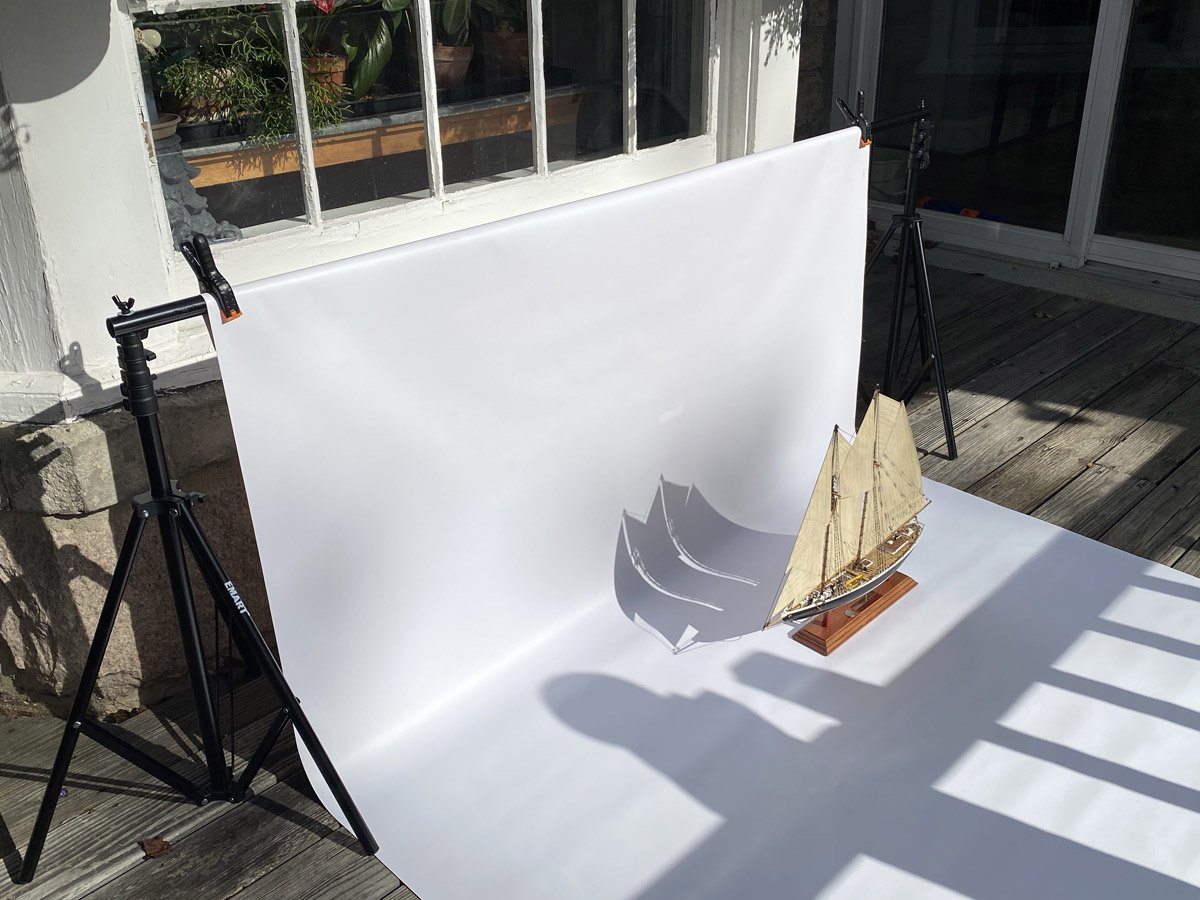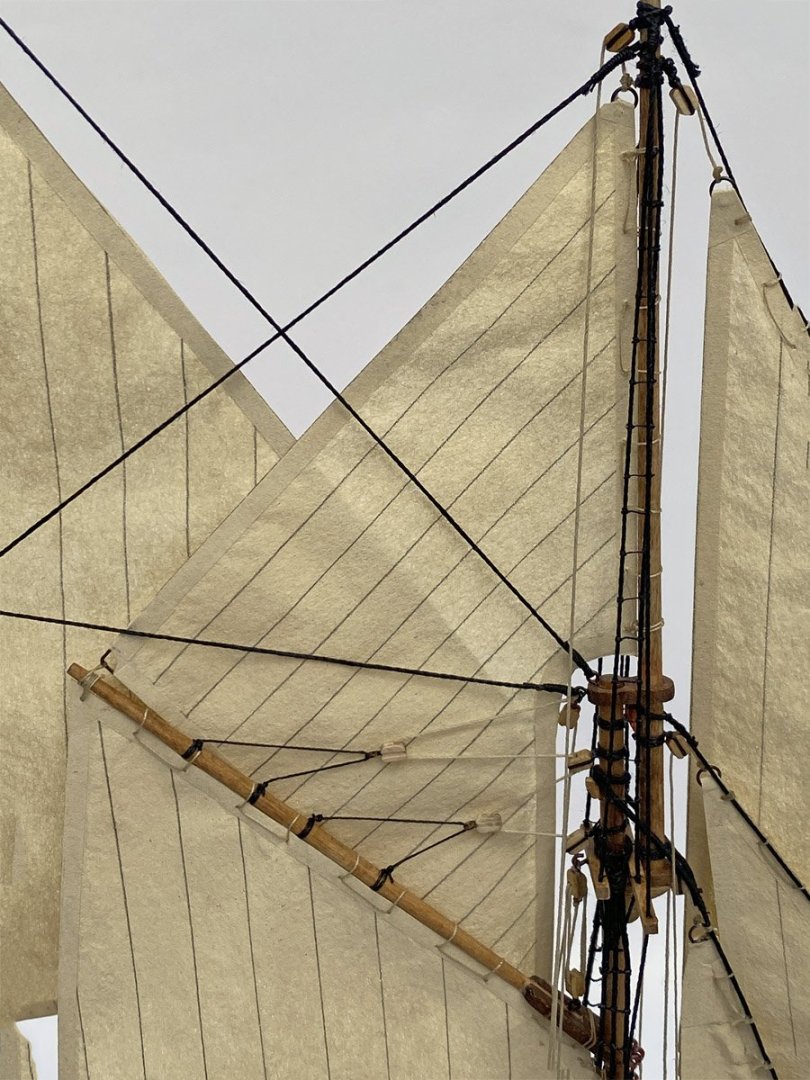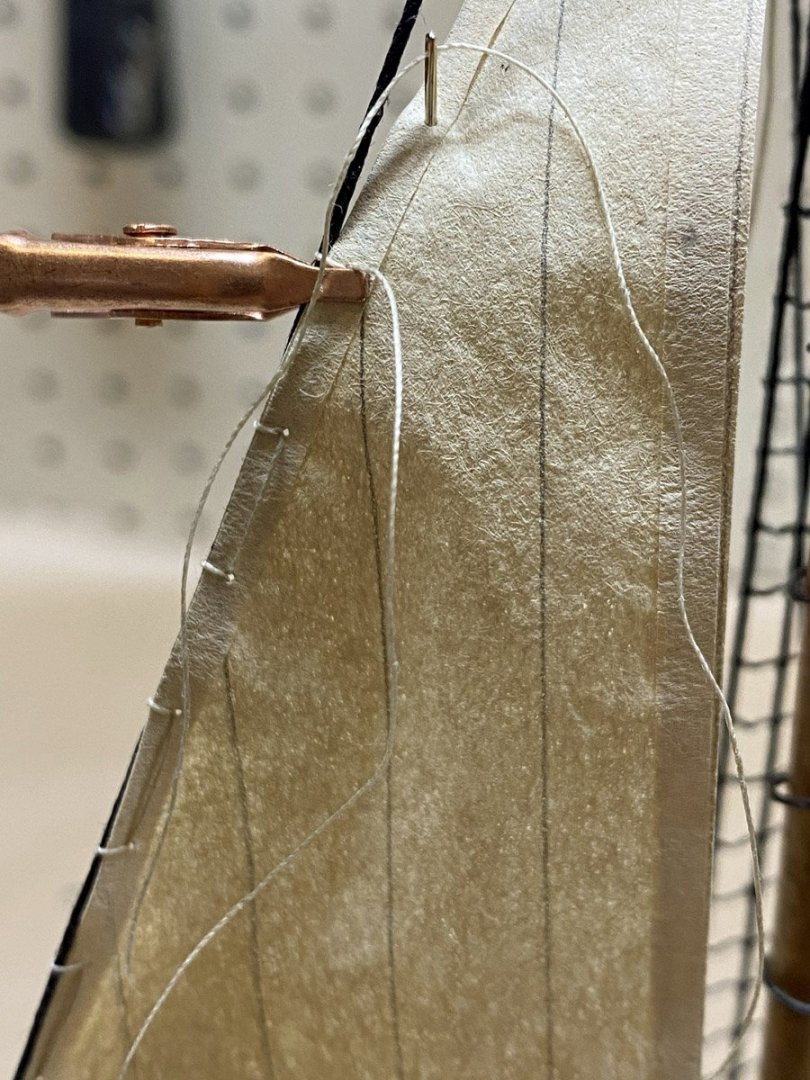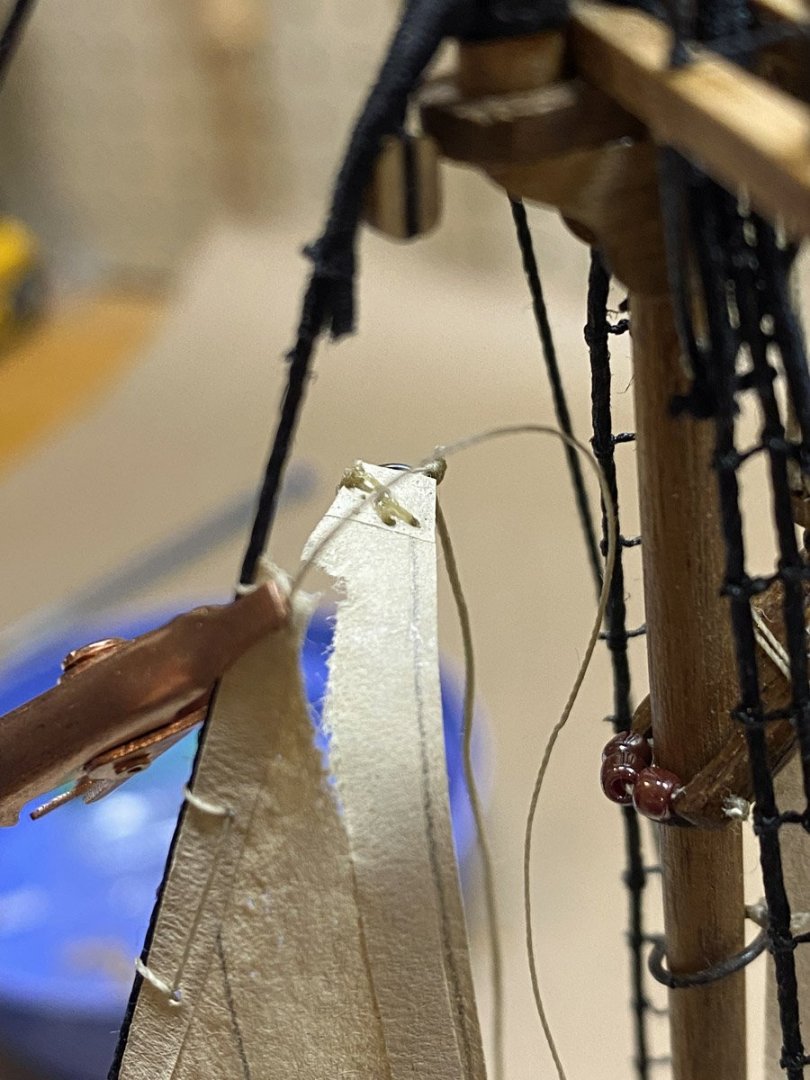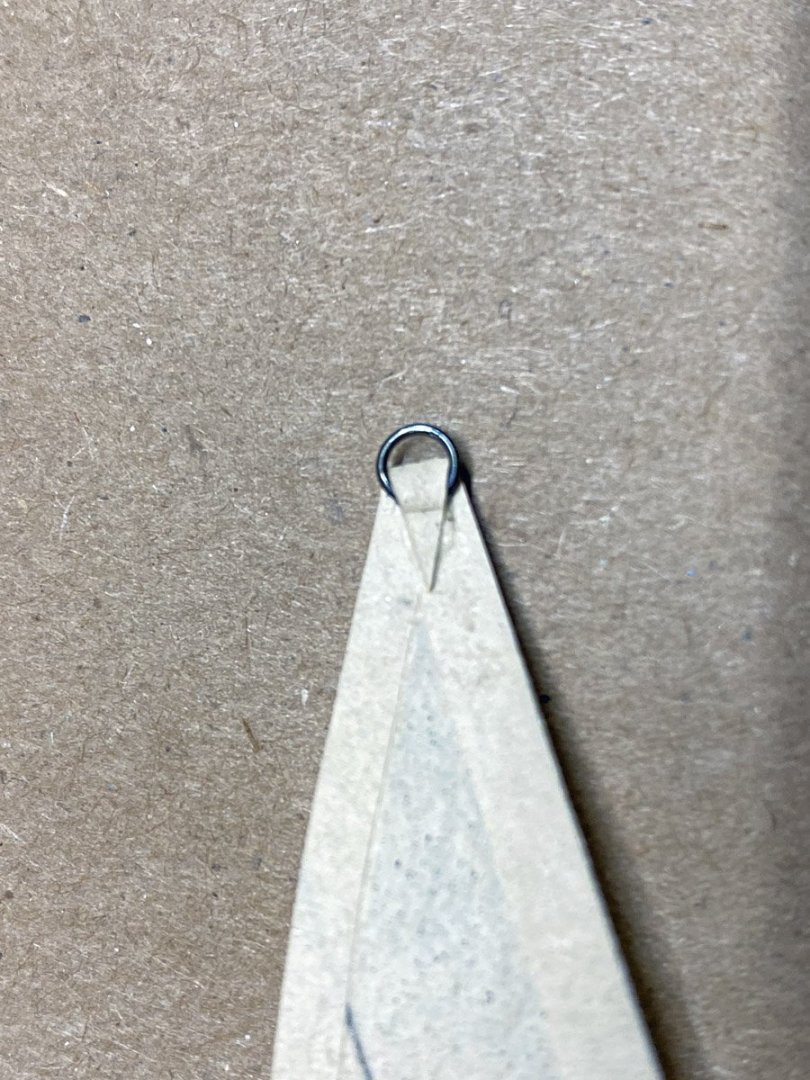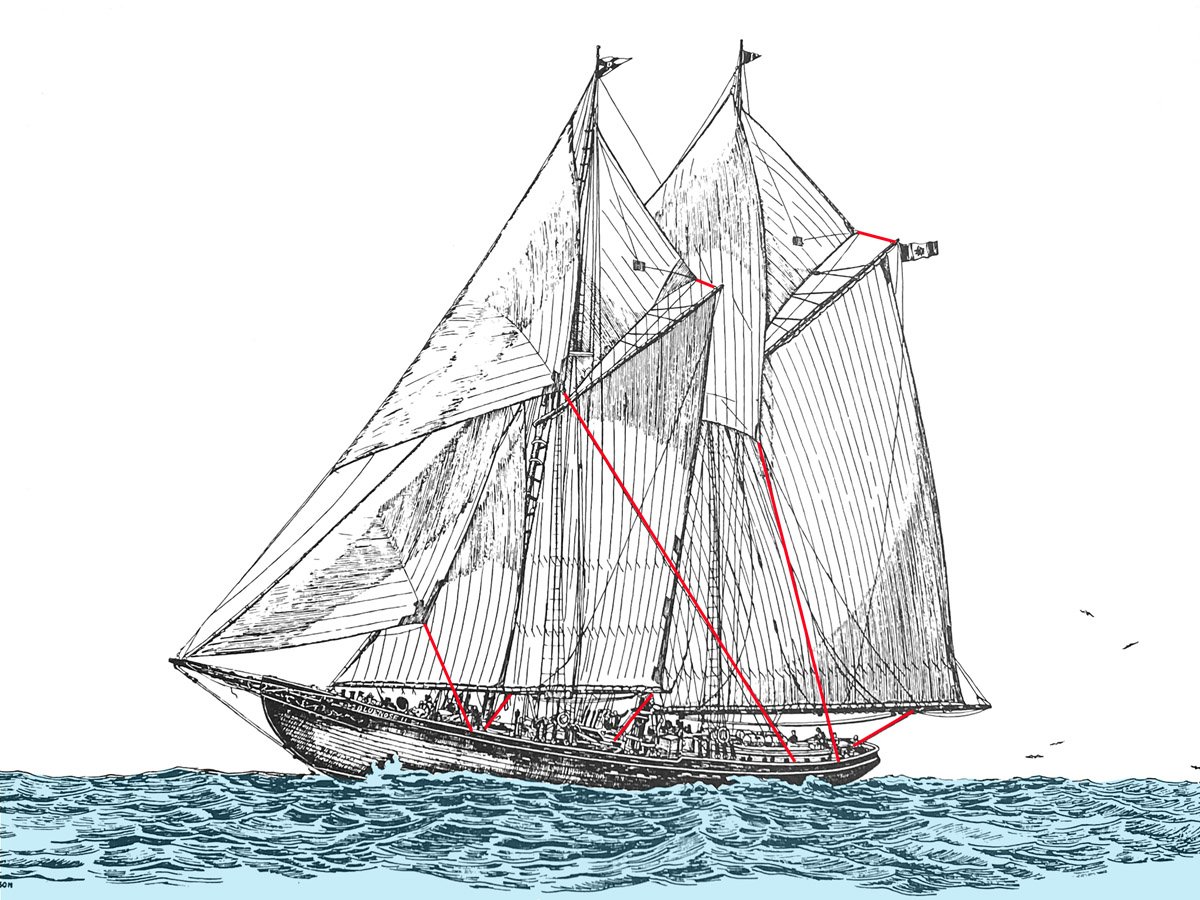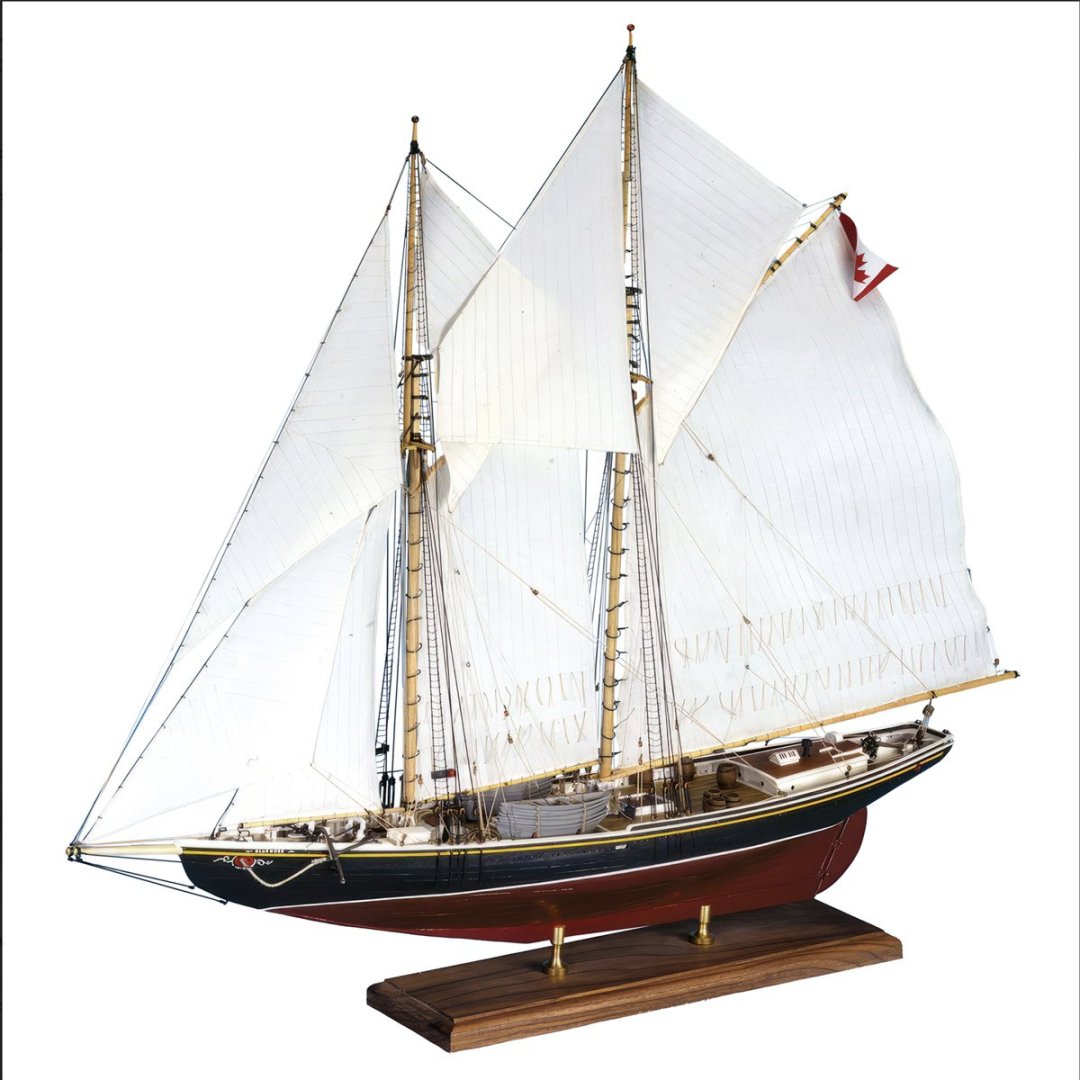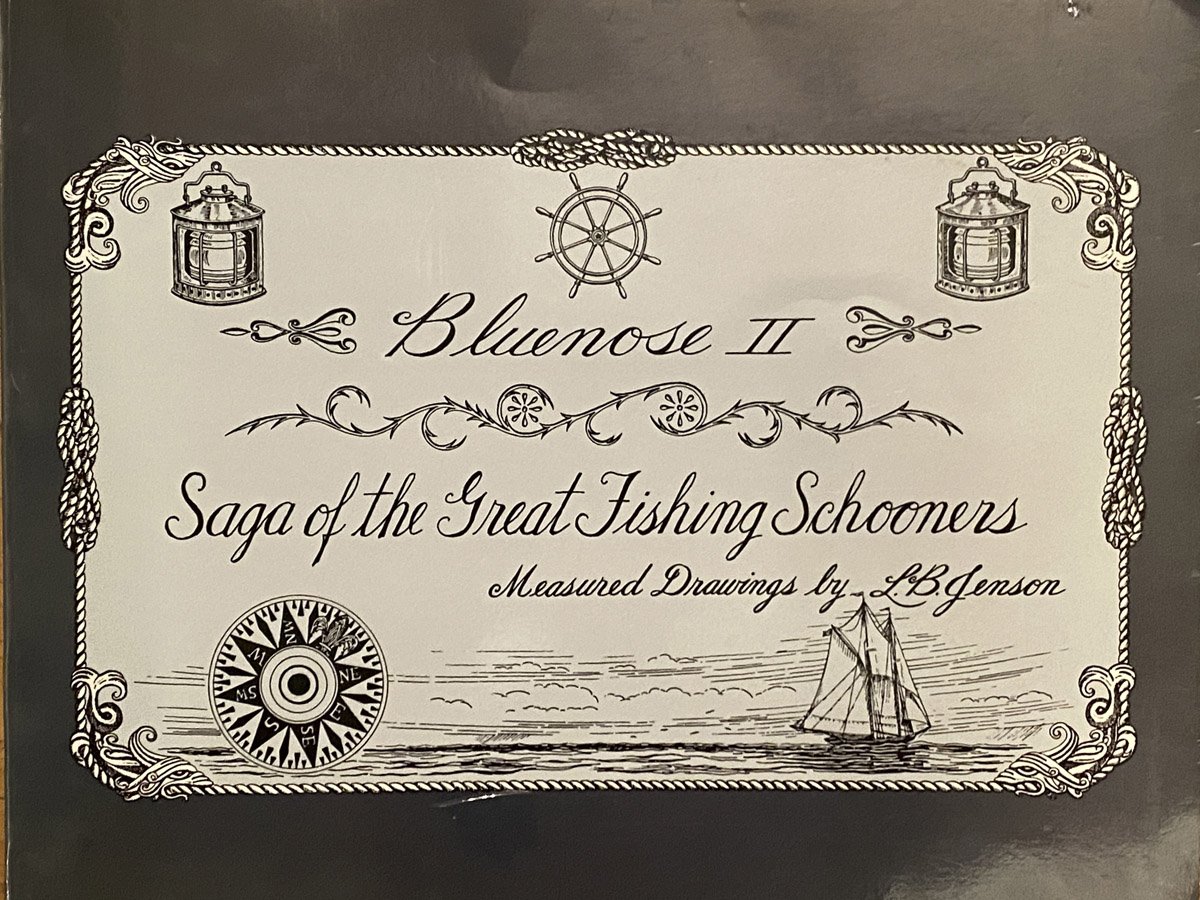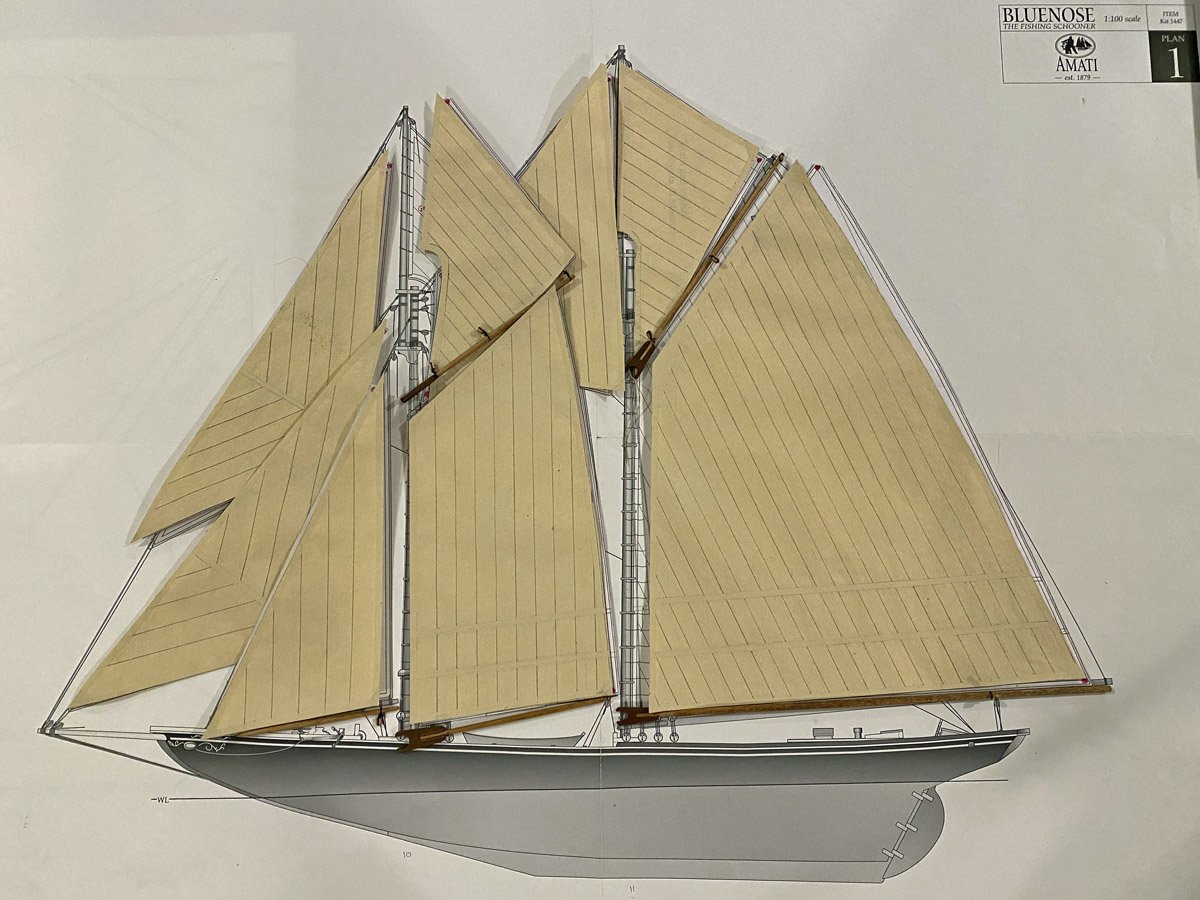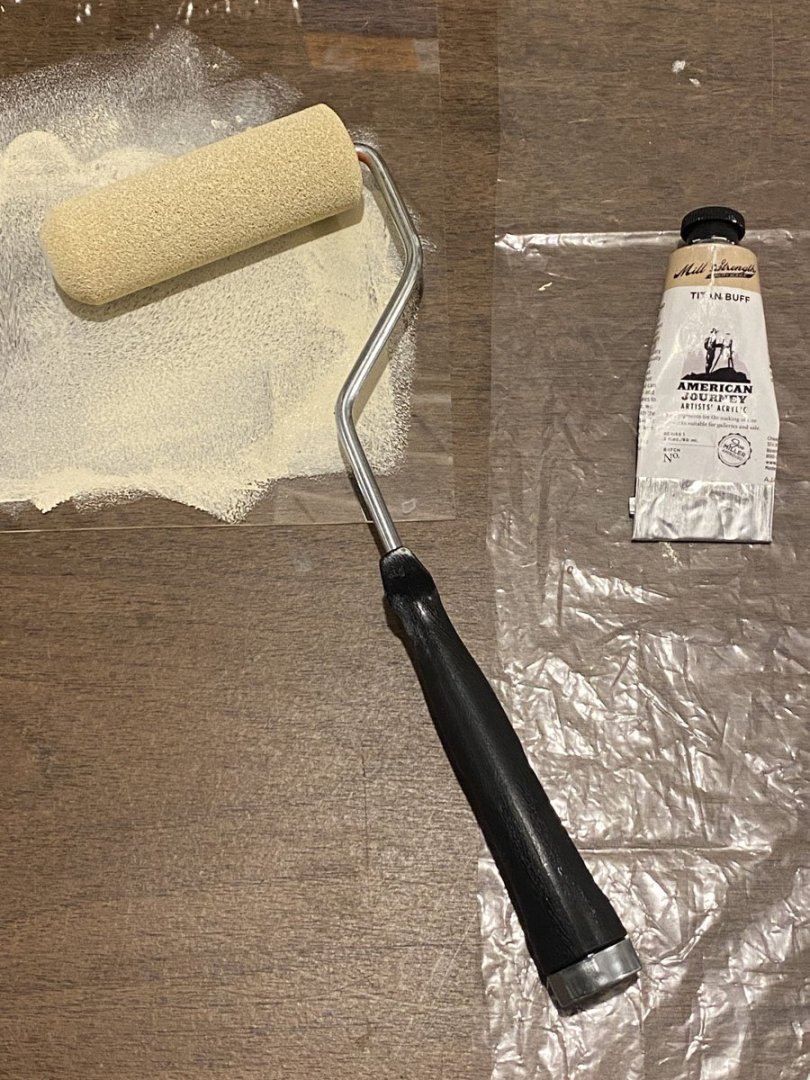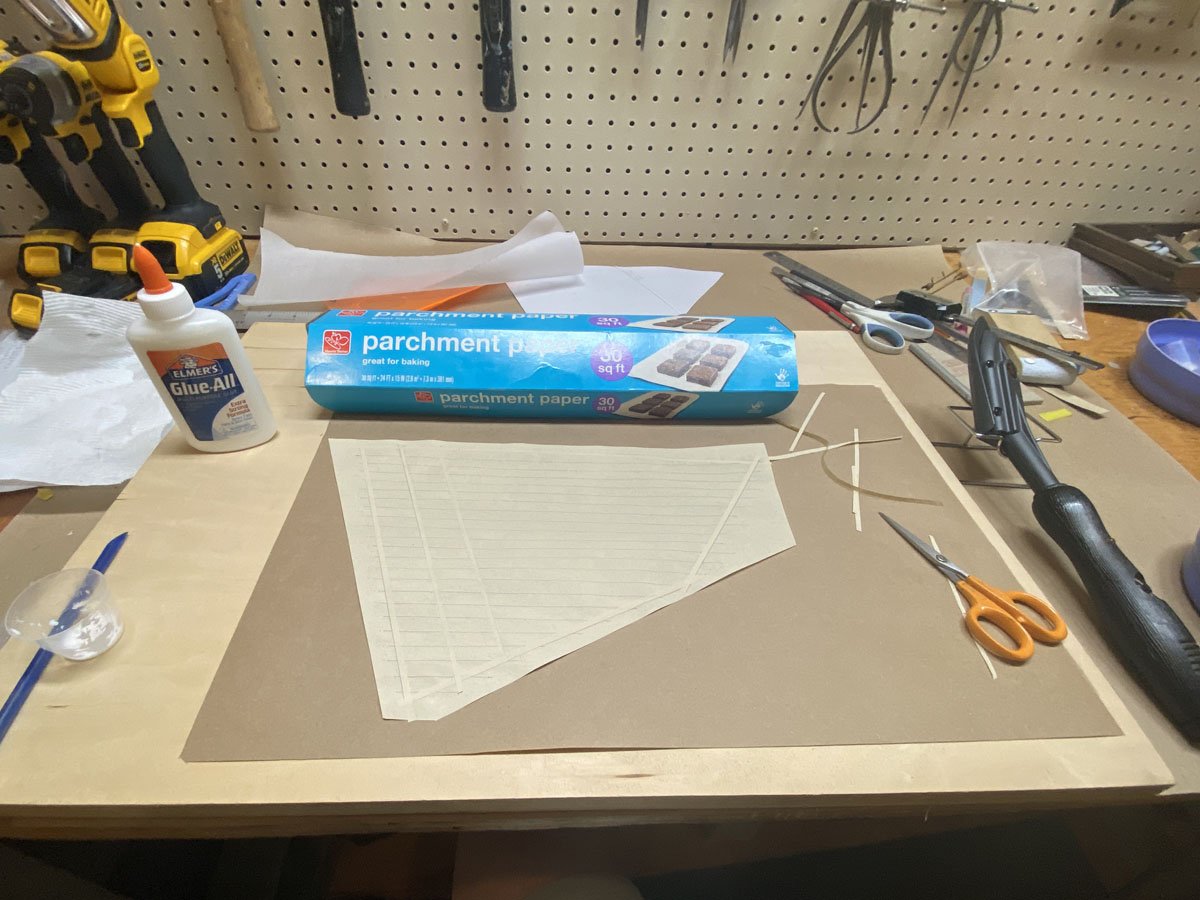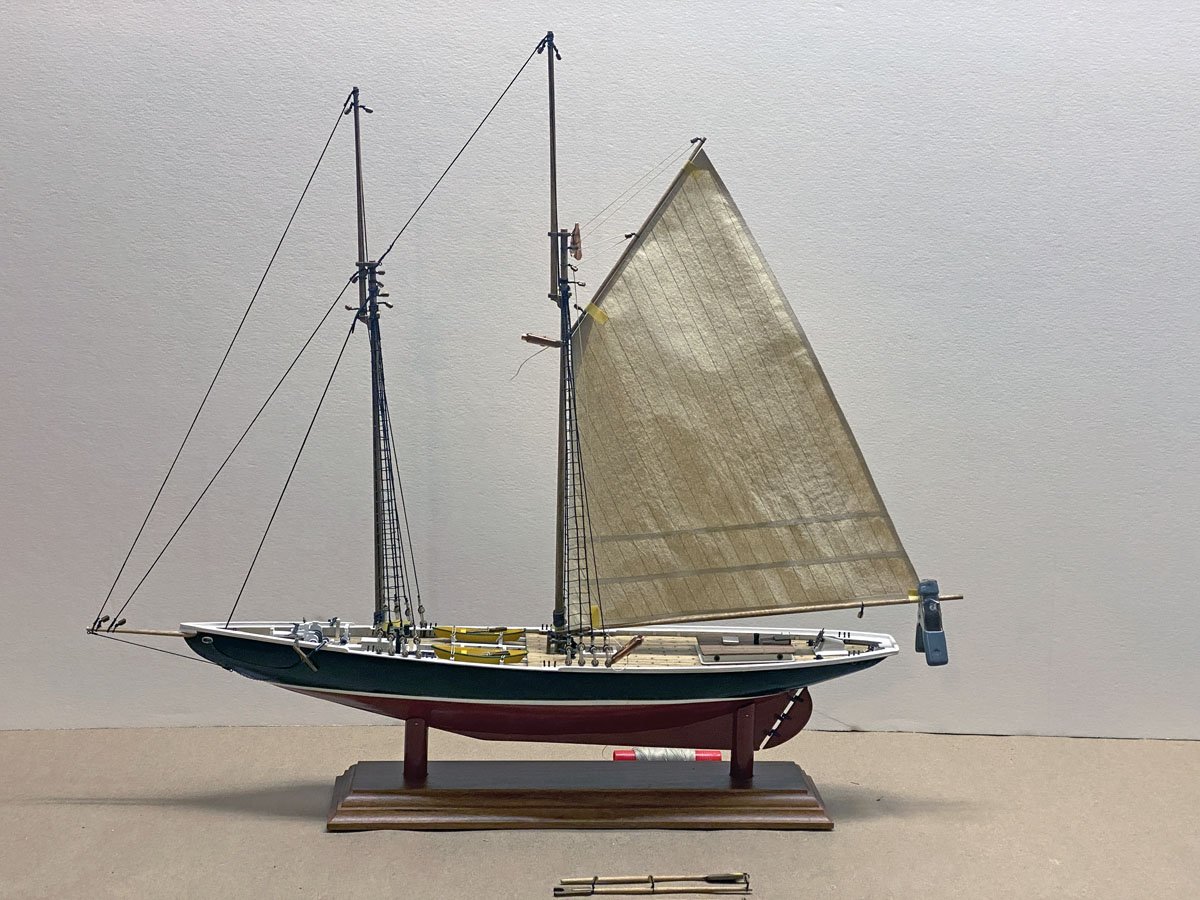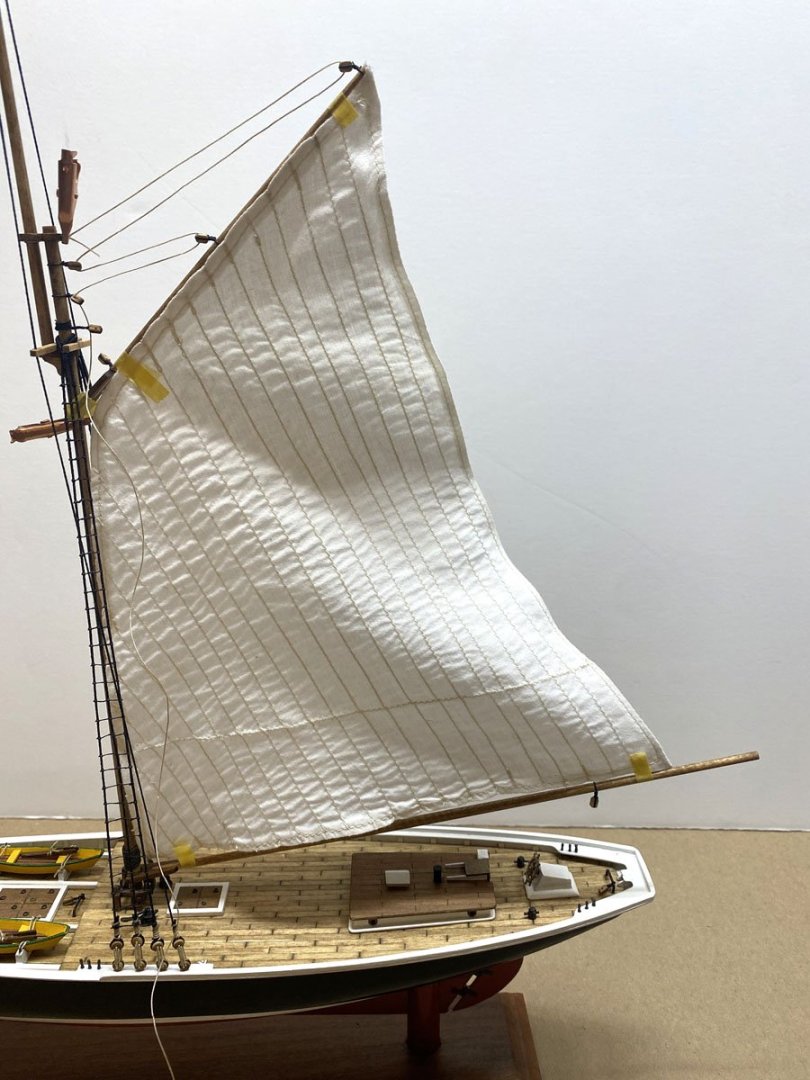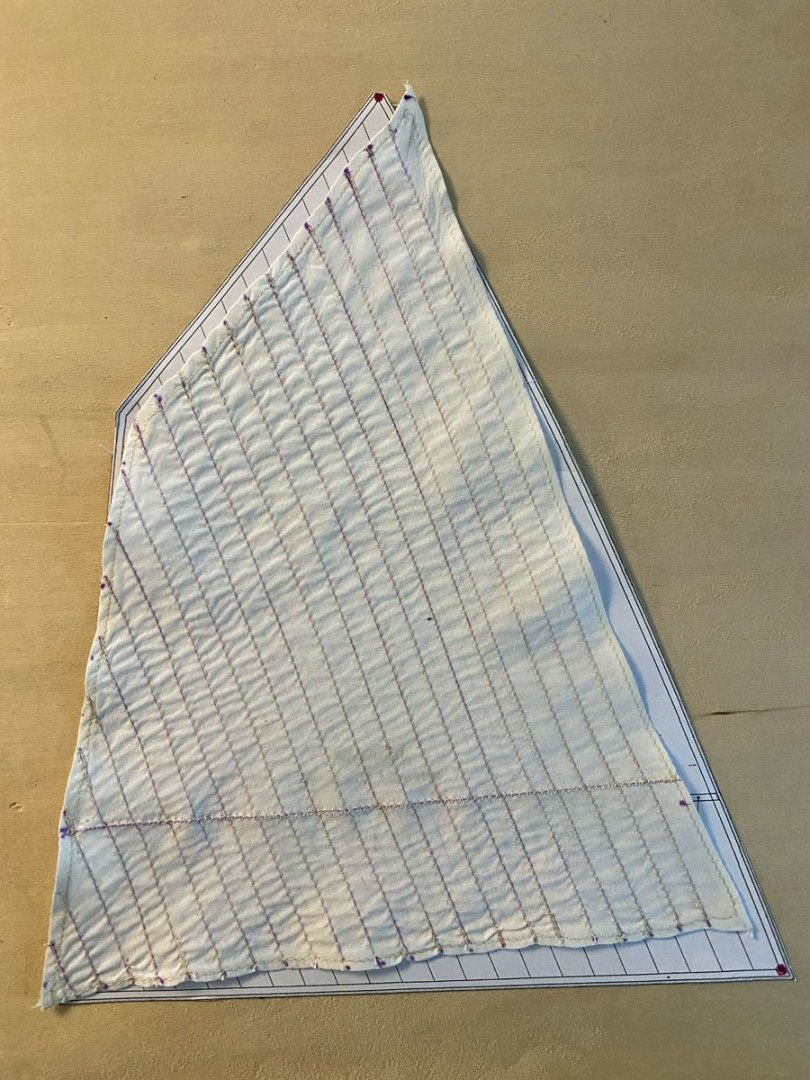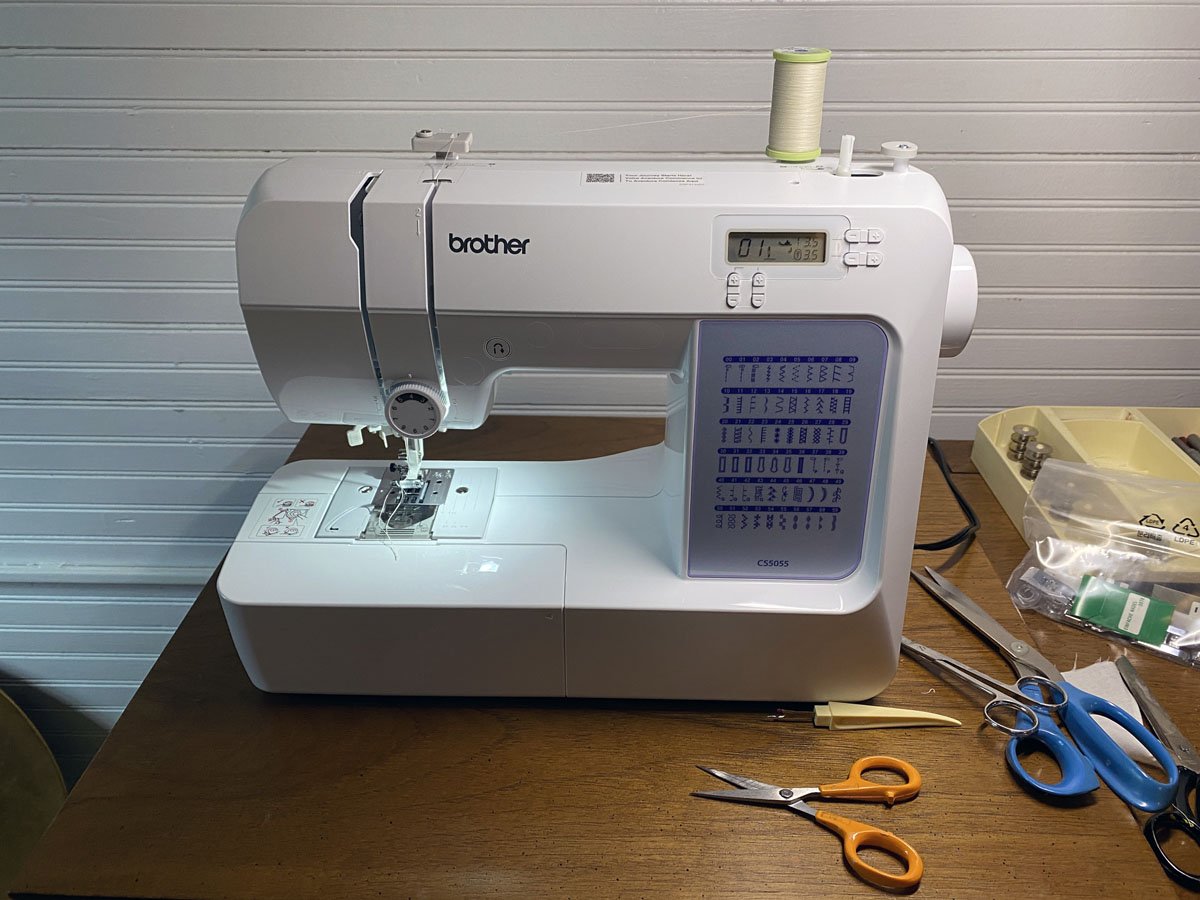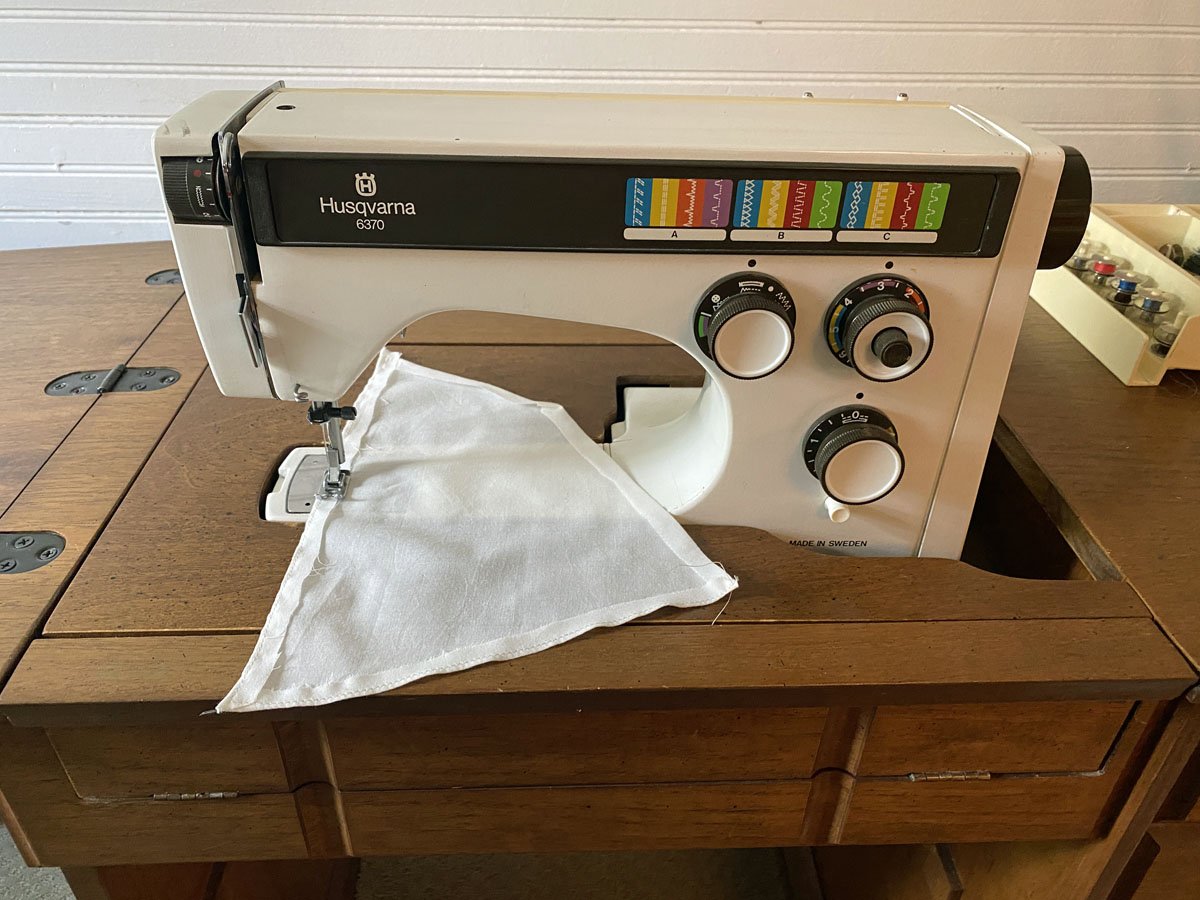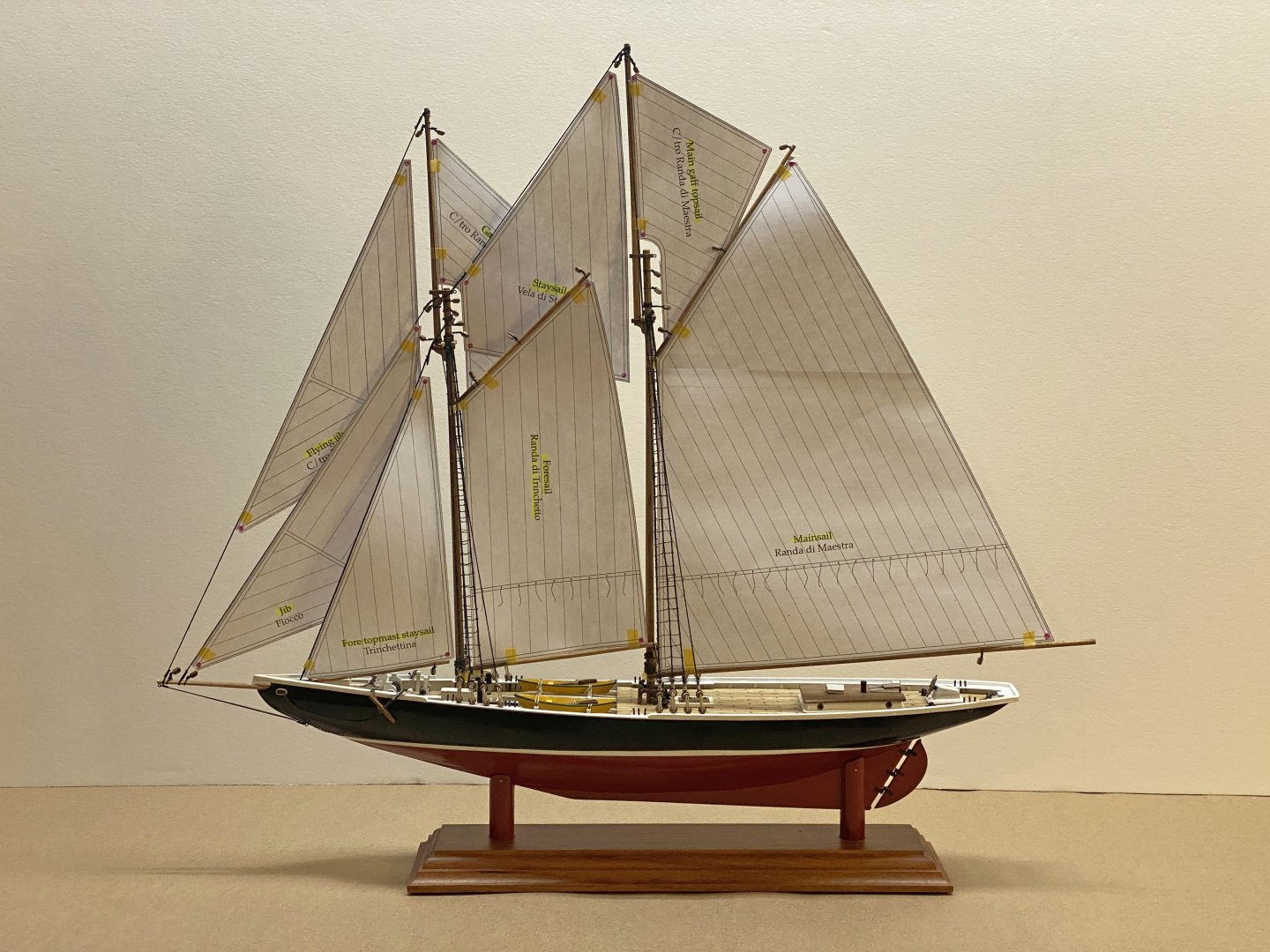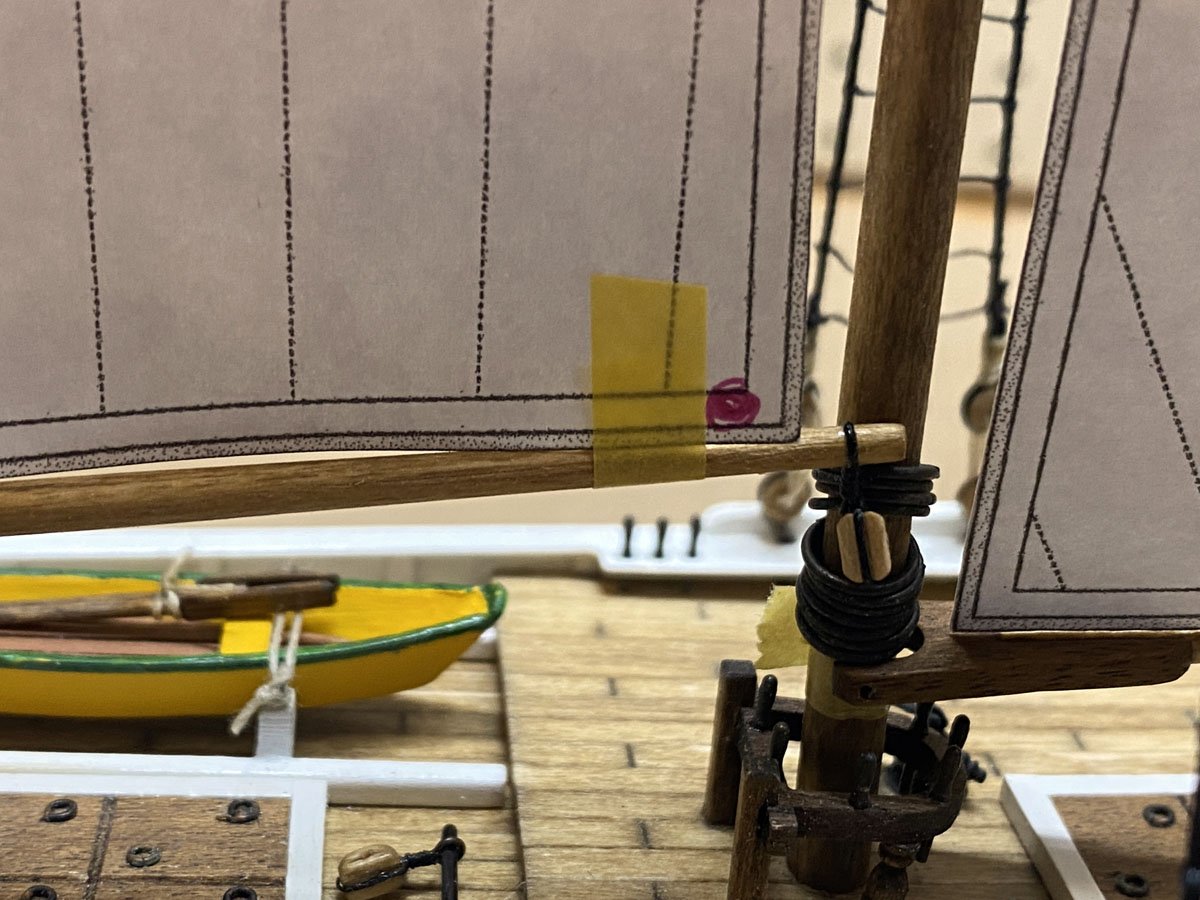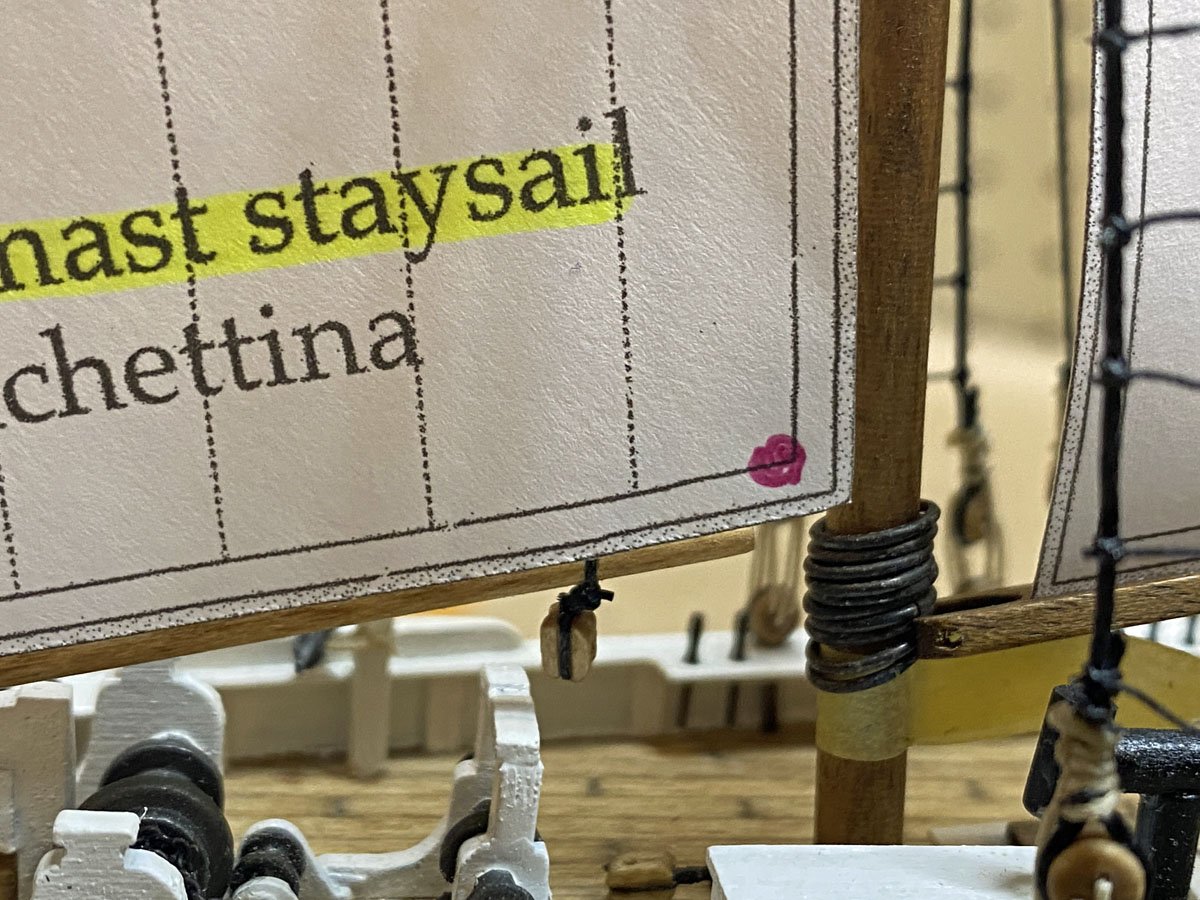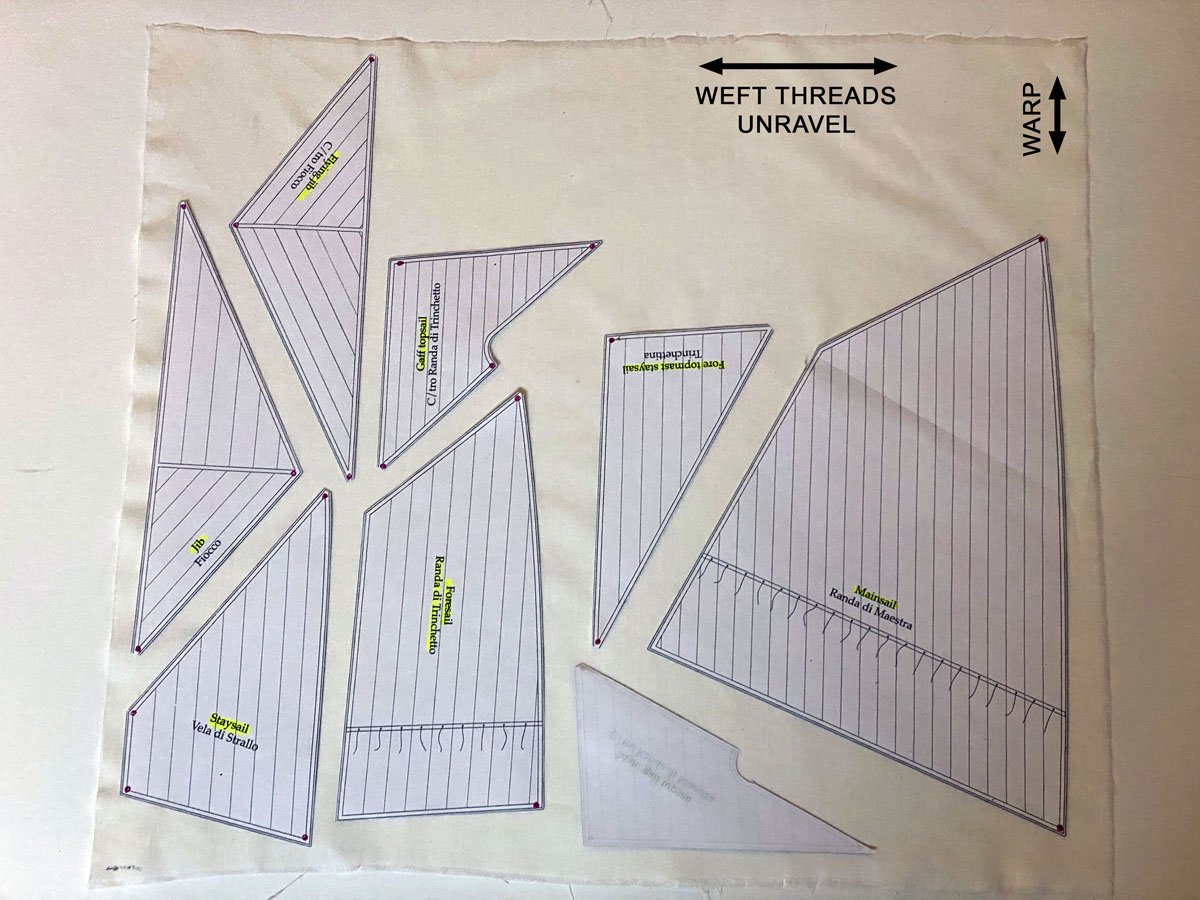-
Posts
697 -
Joined
-
Last visited
Content Type
Profiles
Forums
Gallery
Events
Everything posted by rvchima
-
I recently completed this stick and tissue model of a Westland Lysander. The original aircraft were built in the late 30s and were used by the British for search and rescue. The model kit is made by The Vintage Model Company. It is approximately 1/27 scale and has a wingspan of 22". It's a beautiful little model that was a challenge to build. My only complaint is that the supplied black tissue is very fragile when wet and too transparent when dry. I'll look for better tissue if I do another VMC kit. One photo of the structure. The parts are laser cut and fit together perfectly. The wheels, struts, and pants are laminated from many pieces and require a lot of carving. and sanding. The silver cowling is vacuum formed but the black cowling is card stock over a built up frame. No decals - the lettering comes as a printed sheet that you literally cut and paste. I used a silver marker to outline the control surfaces. Black did not show up. Engine cylinders are made of a balsa dowel wrapped with thread, covered with CA, and sliced in half. Lots of work and very hard to see. I found an image of a Lysander control panel online, printed it, and pasted it in the cockpit.
-
Very clever with the doors and windows over the vertical siding. It looks perfect and no one will ever know. I just looked up your location in Landis, NC on Google maps. You are close to the NC Transportation Museum in Spencer. Have you visited it? It's a must for train enthusiasts.
- 62 replies
-
Phil, I don't have trains of my own but I do volunteer at the NC Arboretum running a G-scale model RR. The layout is two concentric ovals about 70'x30' around a model town that represents Biltmore Village around 1880. We are in the middle of the Winter Lights program so I was there last night running trains in sub-freezing temperatures. I was running a 4-6-2 pulling the Polar Express - very popular with the visitors.
- 62 replies
-
Hi Phil, I just noticed that you had started your build, and I will follow along. That hull is really hard to plank, with only a few frames and one layer. It looks like you're off to a good start. Rod
- 62 replies
-
Thank you to everyone for all the kind words! I hope that my posts might help someone else considering this kit.
-
Bluenose Finished - 121 days, 253 hours I finished my model yesterday and have my bench cleaned off. I would especially like to thank Trevor (Kenchington), David Lester, Ggibson, and several other contributors who helped me with so many questions on this model. Full disclosure I omitted a lot of rigging on the sails. I tried to include all the hallyards and tacks, but omitted many of the clew lines and sheets. They are all omitted on Amati's plans so I don't know where they go and I don't have anything to belay them too anyway. Kit Review, Amati Bluenose, 1:100 scale Back on June 18, I posted "What's in the Box - Seems like not much for €106.99" The kit included: Plenty of wood planking. Two spools of rigging, all tan, and all way too thick. Some brass wire for rings, way too thick. Two historically incorrect Canadian flags. Some unusable cloth for sails. Some wooden single blocks at about 2x scale, but not nearly enough. The kit did not include: Usable rigging line. Double blocks. Eye bolts. Belaying pins. A decent stand. Plans & Instructions The three full-sized plans are somewhat helpful, but the instructions are terrible. The last two steps basically say "Build the masts and sails," and "Attach the standing and running rigging." The instructions do not show any of the upper shrouds or ratlines. The plans show an image of the deck with dots where belaying pins should be. They do not correspond to anything I've seen anywhere else. The rails on the model all seemed too close to the deck. That made it very difficult to belay lines. The rails also seem to be too narrow. When I tried to drill to add my own belaying pins I often ended up drilling to the outside of the hull. There are no eyebolts on the rails or deck, but Jensen's book and the MS kit has many lines tied off to such points. The instructions show a drawing of each sail with a number on each corner. The numbers correspond to a deck plan with numbers on the rails where, I guess, you're somehow supposed to tie the line from the sail. But many of the connections just don't make sense - they cross to the wrong side of the ship or go way too far aft. Many thanks to Jensen's book and to my followers for helping me get some of this right. Final Comments and Photos I chose the Amati kit because it is small, and I am running out room for model ships in my house. The model was very frustrating because of the poor parts and terrible plans. I pre-rigged all the masts, booms, and gaffs according to the plans, and ended up re-rigging almost everything, usually in place, to get the rigging somewhat correct. I still know that so much of the rigging is incorrect, but just couldn't fix any more at this point. Anyway, my model looks pretty good if you don't know enough to spot the errors. Unfortunately I do, but I won't tell anyone. Rod Here's what I go through for my 7 followers. I took some early photos, and then the sun peeked out from behind the trees. I did get a nice image of the shadow.
-
More Problems with the Fisherman's Staysail A few days ago I wondered whether the fisherman's staysail should be on the windward or leeward side of the foresail & gaff topsail combination. It seems that both locations were used, so I opted to rig mine on the windward side as shown in Jensen's book. That looked good, until I turned the model around and saw that the staysail completely hid all intricate rigging on the fore gaff. And so, deconstruction. It only took about 1.5 hours to re-rig the staysail on the leeward side of the foresail, etc. and now all the rigging on the fore gaff is visible again. So the location of that sail turned out to be a question of model aesthetics rather than proper sailing.
-
Attaching Sails I pre-punched the edges of my sails every centimeter. I attached them with a stitch that loops around the boom or stay and then moves up the sail to the next hole. I made attachment rings by wrapping brass wire around a brass rod in a tight spiral, and then cutting off individual rings. But the wire supplied by Amati was 1 mm in diameter and the rings looked like fat little donuts. I re-made them with 0.5 mm wire. I tried to stitch rings to the corners of my first staysail, but the attachment failed as soon as I put some tension on it. After that I just folded the vertex of the triangle through a ring and glued it down. That worked well for sharp corners. For blunt corners I bent a short piece of wire and glued it in place with some silkspan over it. Both methods work well.
-
Trevor, That video is amazing. I really enjoyed it at about 30 seconds when the crew is just enjoying the ride, and then suddenly everyone jumps up to grab a line! Very exciting.
-
Trevor, Thank you so much for your help with this question. It seems like I can't go wrong no matter where I position the staysail. I am not a sailor but I do enjoy making models of beautiful ships. I usually rely on a kit with good plans and instructions to get the details right. This is not one of those kits, so your help is greatly appreciated.
-
Location of Staysail & Gaff Topsail I am behind on posts but ahead on construction, and have run into a question of where to rig the Fisherman's staysail relative to the gaff topsail & foresail. The instructions by Amati below show the staysail between the foresail and the gaff topsail. This is impossible because those two are rigged together with a clew line. Another Amati error. The two following images from Jensen show the staysail rigged inside the gaff topsail & foresail. The two following images from EdKu20 and Model Shipways online show the staysail rigged outside the gaff topsail & foresail. Rigging the staysail outside the other two seems more intuitive. It leaves the staysail free to fill as it wants to without pushing the other sails. But I sure could use some advice on this.
-
Trevor and Phil, Thank you for the excellent explanations. I suspected that was the case, but with no experience sailing I wasn't sure. Now I understand why many blocks are attached with removable hooks. And why a race on a triangular course would be so difficult.
-
Rigging Question Jensen's book shows foretopmast and maintopmast backstays, which of course are not shown on the Amati plans. Jensen mentions different locations for securing these backstays when they are or are not setup. When would they be used? They would seriously limit the motion of the fore and main booms. Is that important, or do the booms not have to move that much? I'll admit to complete ignorance on this question.
-
Mainsail Complete - 110 days, 211 hours I'm trying to include some of the details that Amati left out of this kit. I am using Jenson's book as my main reference. His drawings show details of the rigging but aren't always clear where lines are belayed. I'm pretty much stuck to using belaying pins that are already installed and don't look like they will be needed later. The scale is small enough that I've had to cheat a little. I've used single blocks on many lines that should go through double blocks. Going to need some really strong sailors. Here' the ship with the mainsail installed. In the next photo I've highlighted in red everything that is not included in the Amati kit. Quite a lot actually. And two detail shots.
-
Hi David, For the reef lines: Punch the holes in the sail first with a fine needle. Attach 1/2" steel rulers to each side of the sail with a spring clamp. Starting near the clamp, sew the thread around a ruler, through the sail, then repeat on the other side. At this point the threads will be too loose to cut the bottoms without glue. Put a drop of dilute Elmer's glue, maybe 40% water, on each hole with a fine brush. Flip the sail and glue the other side. By now the glue is already getting tacky. Lay the sail on the bench, hold the tops of the threads to the ruler with a finger, and cut the bottoms with with a sharp razor. Lift the ruler out when the bottoms are all cut. Straighten the threads while the glue is still tacky enough to hold them in place. Flip the sail over, do the other side, and trim any long threads to length. I experimented a lot on scraps to get this to work.
-
Better Baggy Wrinkles (BBWs?) The answer was in front of me all along in the rag that I tried to use. Instead of using the roping from the edge I cut strips of the rag itself along the stitch lines. They are nice and fuzzy, the width is perfect, they don't unravel, and they are easily stitched along the lines. Many years ago we had a young Amish woman who cleaned for us. She gave us a huge stack of these rags, and as I recall she bought them in the automotive department at Walmart. Thank you Ada.
-
Sails Redrawn and Reefing Lines Added I redrew the sails that had incorrect cloth seams, and added reefing lines to the fore and main sails. I made the reefing lines by clamping 1/2" wide stainless rulers to each side of the sail, then stitched some cotton thread side-to-side through the sail and around the rulers. I dabbed some thinned white glue on each hole, then carefully cut the bottom of each stitch with a new blade before the glue dried. I barely had time to clean the glue off my rulers. I then stitched the boom and gaff to the mainsail. I really wanted to attach the mainsail, but as noted in the previous post, there are a lot more things to attach to it first. I plan to attach the main boom lifts, and they are padded with baggy wrinkles (BWs) to prevent the sail from chafing against the lines. There are lots of questions on MSW about how to make BWs, but not a lot of answers. I tried making some by cutting the edge roping off a rag that we had. It was surprisingly hard to thread a needle through the pieces - you may notice some blood on one or two. I wasn't sure if I liked them so I tried a technique recommended by PopJack. Basically he tied some line with a running stitch while including some wool fiber. I used a crochet hook and omitted the wool, but ended up with a similar result. The photo shows the rag with some edging removed, a line with edging used as BWs, and a line with crocheted BWs. The BWs are all loose on the lines and can be re-positioned, trimmed, and glued later. I think I like the rag BWs best.
-
Jenson's book is showing me so many things the Amati kit omitted that it's making everything a lot harder at the moment. No upper shrouds or ratlines. No upper mast backstays. No halyards. Incomplete rigging for the booms. No boom lifts. I added the upper shrouds and ratlines, which was difficult because of other lines in the way. But I can't decide what else to add and what to just give up on.
-
Bluenose II, Saga of the Great Fishing Schooner by L. B. Jensen I finally bought a good reference book for the Bluenose, at least Bluenose 2.0. The cover is deceptive - the book measures 11" x 14". It is entirely hand drawn and lettered, and is filled with excellent detailed drawings of the ship. Now I can see what details I've already got wrong. So what's wrong with this picture? If you guessed that the seams between fabric pieces on the jib and jib topsails are much wider than those on the mainsail you are correct. I copied all the seam patterns directly from the plans and never noticed the discrepancy until now. The seams on the mainsail are spaced 1 cm apart, or 39" at full scale - very reasonable for 1920s fabric. The seams on the jib and jib topsails are 13 mm apart, or 51" at full scale - way too big. Would anyone ever notice? Probably not but I'll have to redraw them anyway. Note: you cannot erase pencil marks on silkspan.
-
Much Better! I built a new mainsail from silkspan using Tom Lauria's technique linked above. Tom does not seem to post on MSW but a quick search on Lauria turned up 6 pages of mentions, mostly about making sails or rope hanks. I had plenty of silkspan from previous model airplane projects. It is strong and does not disintegrate in water - that's why it's also used to make teabags. It is available in three thicknesses from Sig Manufacturing. Tom said his was .0015" thick. Mine is .003" thick - I suspect it's Sig's medium-weight material. My only concern is that silkspan can become brittle and yellow over the years. However, the first step of Tom's process is to coat the silkspan liberally with artists' acrylic paint, and that should help protect the material. I chose an off-white paint called Titan Buff. I think it resembles muslin. I painted two sheets about 18" x 24" and used almost half a tube of paint! The silkspan really soaks it up. The paint goes right through the material, so when the front is done the back is too. I marked the sails with a hard, dark pencil and attached hem reinforcements with diluted Elmer's glue. Tom recommends using a travel iron to seal the strips down, with a sheet of dry wax paper between the sail and the iron. Dry wax paper is NOT the wax paper you have in your kitchen. It is also called deli paper and has the wax embedded in the fibers so it doesn't come off on your sandwich or your sail. Even better, we had some parchment paper which is silicon-based and used for baking in a hot oven. I only needed a 6" strip. I don't have a travel iron - I don't think I've ever ironed clothes while traveling. I do have a covering iron used to attach iron-on covering to larger model airplanes. I set it to 250 degrees and it worked perfectly. The mainsail took a few hours to make and I am pretty happy with it. I still have to stitch it to the boom and gaff, and attach the sail to the rings on the mast. That looks tricky.
-
Well, That's Not Going to Work After all the sewing, my cloth mainsail is too far out of shape. I think I will try making sails out of silkspan, as described in this YouTube video by Tom Lauria. I actually have plenty of silkspan left over from my model airplane days. Making Sails for Ship Models from Silkspan, Parts 1 & 2
-
Every Project Deserves a New Tool - Or Does It? I was ready to start sewing sails, so I collected all my tools and materials from my basement workshop and carried everything to my wife's sewing room three flights up in the attic. We have an old Viking-Husqvarna sewing machine that we inherited from my mother-in-law 40 years ago. It used to do fancy stitches using various cams. The cam mechanism jammed years ago but it still did beautiful straight and zig-zag stitches, until earlier this summer when it started to smoke. We took it to a local repair shop where the repairman cleaned it and assured us that it was accumulated dust that was smoking. I set up to sew my mainsail but when I went to wind a bobbin, the bobbin shaft disappeared inside the case. I spent all day disassembling the machine and managed to fix the bobbin shaft. I sewed two seams before the whole machine jammed up. I gave up and ordered a new Brother computerized sewing machine from Amazon. It cost less than what I paid the repairman for the other machine. It doesn't fit inside our old sewing machine cabinet but I think I can make it fit. 45+ year-old Viking-Husqvarna machine. New Brother computerized machine. After a little practice on some scraps I stitched my mainsail. At first the sail matched my plan almost exactly. But after stitching all the scale seams between the individual pieces of fabric, the sail was much shorter than the pattern. (The purple stitch lines are supposed to disappear automatically after a few days.) After stitching a zig-zaged reefing band the sail was also narrower than before. My wife said "Yeah, sewing can take up a lot of fabric." By the way, I really like the computerized Brother machine. My only complaint is that there are a few settings that are made by shutting the machine off, holding a button down, and then turning the machine back on. But when you turn the machine off it resets the stitch pattern, width, and length back to the default. It's easy to get confused and end up with the wrong stitch. That never happened with the mechanical machine. I don't know if I can use the sail or not. I'll have to try it on the ship and see how it looks. Amati was very stingy with their sail cloth and I don't have enough scraps to try over. Fabric is not so easy to find around here since JoAnn Fabrics went out of business. If I can find something appropriate, I could try sewing the fake seams on an extra large piece first, then cutting the sail slightly oversized and hemming the edges to fit the plan. In a private conversation David Lester sent me information about making sails out of silkspan, a strong tissue that I used years ago for covering model airplanes. The seams can be drawn on it with pencil and the hems can be glued down. Maybe I should have listened to him in the first place.
-
Trevor, Thank you so much for your comments about the alignment of the fabric on a sail. I know more about weaving than I do about sailing, so I really appreciate the help. As soon as I read it made immediate sense. And good catch that the upper part of the "jib" sail has the cloth aligned incorrectly. I am trying to be polite to Amati, but I am not too impressed with this kit. I will experiment with the mitre joint on the two jib sails. I'm mot sure if I can sew it at this small scale but I will see what I can do.
-
Paper Sails Yesterday I scanned and printed all my sail patterns. It took a little origami to fit each sail in my 8.5 x 11 printer, and I had to print the main sail in two pieces. Today I washed and ironed the cotton fabric that came with the kit, then laid out the sails on it. Two sides of the fabric unravels - that's the weft. The warp goes in the other direction. The seam lines on the sails follow the warp, and I laid out the sails that way. It probably doesn't matter. After reading Gregg's advice above I decided to test fit the paper sails. I'm really glad that I did because 1. Now I know where the sails go. 2. The foremast boom is too long. 3. The foremast staysail pattern is too big. After a couple of quick modifications I'll be ready to start cutting cloth.
About us
Modelshipworld - Advancing Ship Modeling through Research
SSL Secured
Your security is important for us so this Website is SSL-Secured
NRG Mailing Address
Nautical Research Guild
237 South Lincoln Street
Westmont IL, 60559-1917
Model Ship World ® and the MSW logo are Registered Trademarks, and belong to the Nautical Research Guild (United States Patent and Trademark Office: No. 6,929,264 & No. 6,929,274, registered Dec. 20, 2022)
Helpful Links
About the NRG
If you enjoy building ship models that are historically accurate as well as beautiful, then The Nautical Research Guild (NRG) is just right for you.
The Guild is a non-profit educational organization whose mission is to “Advance Ship Modeling Through Research”. We provide support to our members in their efforts to raise the quality of their model ships.
The Nautical Research Guild has published our world-renowned quarterly magazine, The Nautical Research Journal, since 1955. The pages of the Journal are full of articles by accomplished ship modelers who show you how they create those exquisite details on their models, and by maritime historians who show you the correct details to build. The Journal is available in both print and digital editions. Go to the NRG web site (www.thenrg.org) to download a complimentary digital copy of the Journal. The NRG also publishes plan sets, books and compilations of back issues of the Journal and the former Ships in Scale and Model Ship Builder magazines.




